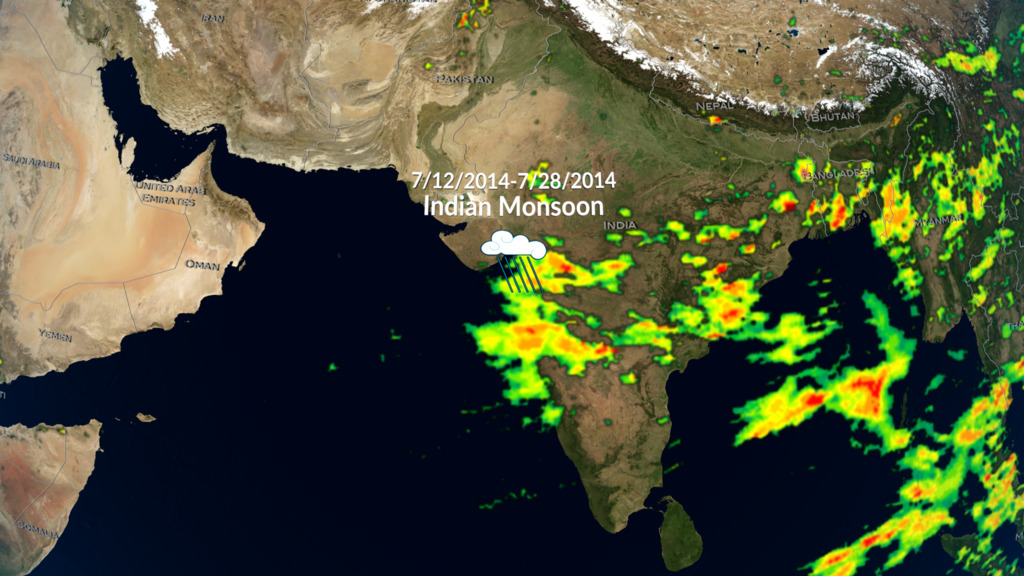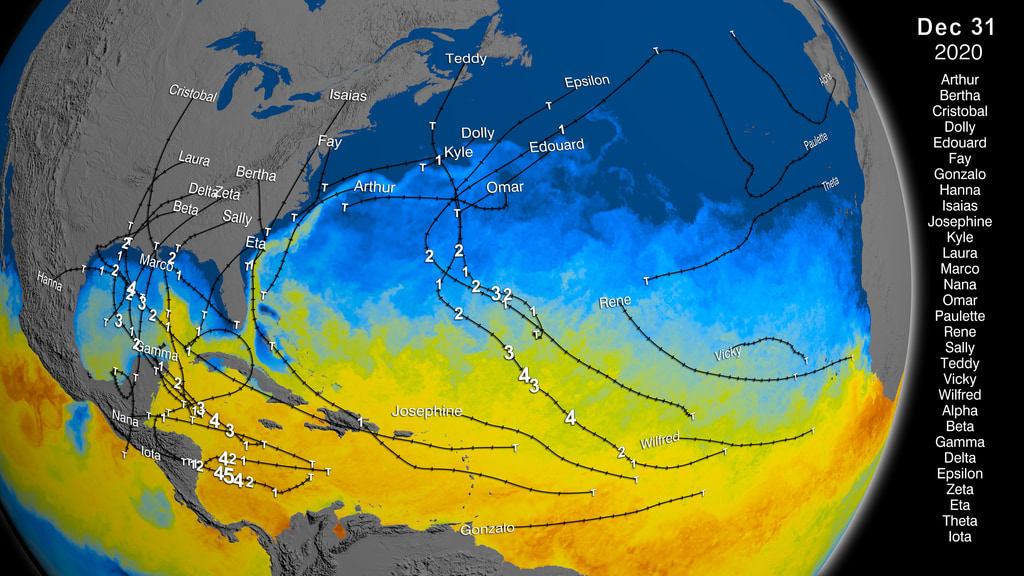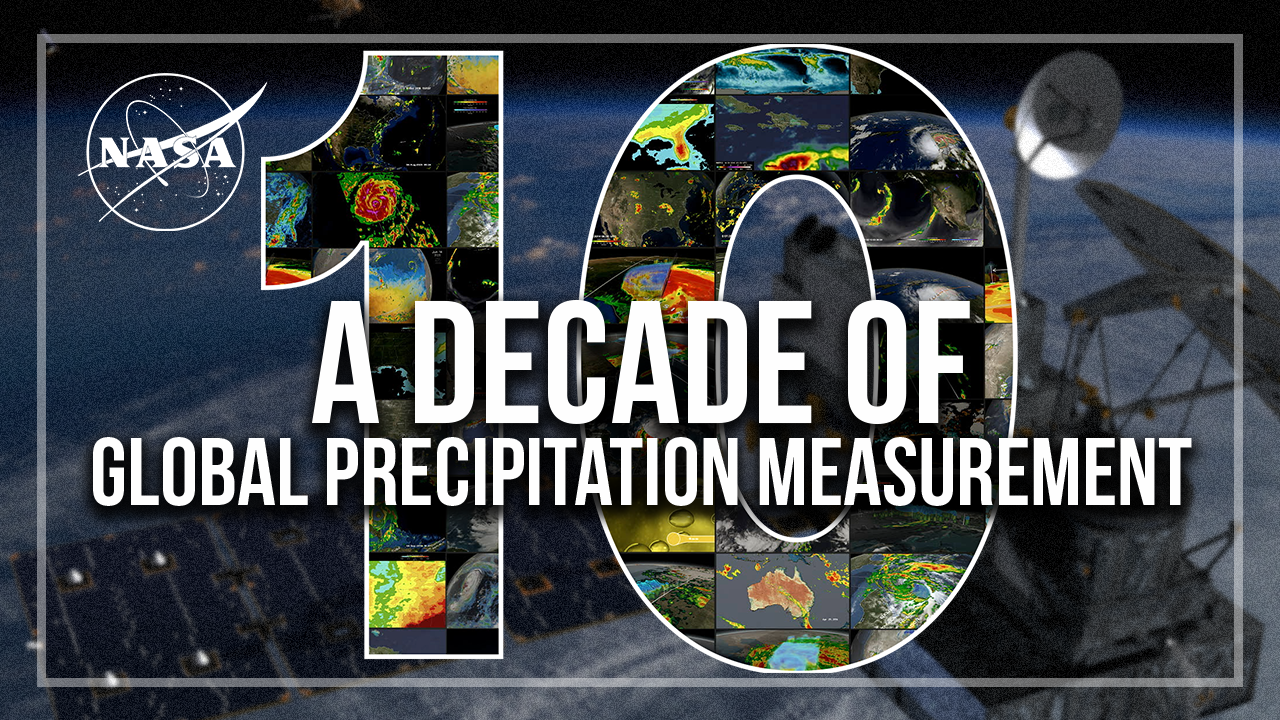NASA's GPM captures powerful Hurricane Laura over Louisiana
This visualization shows Hurricane Laura over the Gulf Coast states approximately 7 hours after making landfall on the morning of August 27, 2020.
After crossing western Cuba, Tropical Storm Laura emerged into the Gulf of Mexico where warm water, low wind shear and a moist environment made conditions ideal for intensification. As it made its way through the Gulf of Mexico Laura strengthened - from a category 1 hurricane with sustained winds of 75 mph on the morning of Tuesday August 25th, to a powerful category 4 storm, with sustained winds of 150 mph on the evening of Wednesday August 26th - an increase of 75 mph in just 36 hours. At this point Laura was nearing the coast of western Louisiana, and made landfall near Cameron, Louisiana at around 1:00 a.m. CDT at the same 150 mph intensity. As it moved inland heading north over western Louisiana, Laura was overflown by the NASA / JAXA GPM Core Observatory satellite at 10:00 p.m. CDT on Wednesday August 26th, shortly before the storm made landfall, then again at 8:11 a.m. CDT on Thursday August 27th, about 7 hours after making landfall, as shown in the animation below.
Rainfall rates derived directly from the GPM Microwave Imager (GMI) and Dual-frequency Precipitation Radar (DPR) instruments show heavy rain (in red) pushing up into northern Louisiana and southern Arkansas as strong southerly winds drew moisture from the Gulf of Mexico on the eastern side of the storm’s strong cyclonic circulation. With its ability to penetrate through the clouds using active radar, the DPR also provided a detailed look at Laura’s structure. Precipitation cloud-top heights from the DPR (highlighted in blue, indicating frozen precipitation) show Laura still had the overall structure of a powerful hurricane, as evidenced by both the symmetry of the outer rainbands that still wrap completely around the storm, as well as the residual structure of a strong core near the center containing elements of very heavy rain (shown in pink). At the time of this GPM overpass, Laura’s maximum sustained winds were still reported at 100 mph by the National Hurricane Center, the equivalent of a category 2 hurricane.
GPM data is archived at https://pps.gsfc.nasa.gov/

Color bar for frozen precipitation rates (ie, snow rates). Shades of cyan represent low amounts of frozen precipitation, whereas shades of purple represent high amounts of precipitation.

Color bar for liquid precipitation rates (ie, rain rates). Shades of green represent low amounts of liquid precipitation, whereas shades of red represent high amounts of precipitation.
Credits
Please give credit for this item to:
NASA's Scientific Visualization Studio
-
Data visualizers
- Alex Kekesi (Global Science and Technology, Inc.)
- Greg Shirah (NASA/GSFC)
-
Scientists
- George Huffman (NASA/GSFC)
- Dalia B Kirschbaum (NASA/GSFC)
- Jacob Reed (Telophase)
- Scott Braun (NASA/GSFC)
-
Producer
- Ryan Fitzgibbons (USRA)
-
Writer
- Stephen Lang (SSAI)
Release date
This page was originally published on Thursday, August 27, 2020.
This page was last updated on Monday, January 6, 2025 at 12:18 AM EST.
Missions
This page is related to the following missions:Series
This page can be found in the following series:Datasets used
-
Rain Rates (Surface Precipitation) [GPM: GMI]
ID: 822Credit: Data provided by the joint NASA/JAXA GPM mission.
See all pages that use this dataset -
Volumetric Precipitation data (Ku) [GPM: DPR]
ID: 830Credit: Data provided by the joint NASA/JAXA GPM mission.
See all pages that use this dataset -
IMERG
ID: 863This dataset can be found at: http://pmm.nasa.gov/sites/default/files/document_files/IMERG_ATBD_V4.4.pdf
See all pages that use this dataset
Note: While we identify the data sets used on this page, we do not store any further details, nor the data sets themselves on our site.


